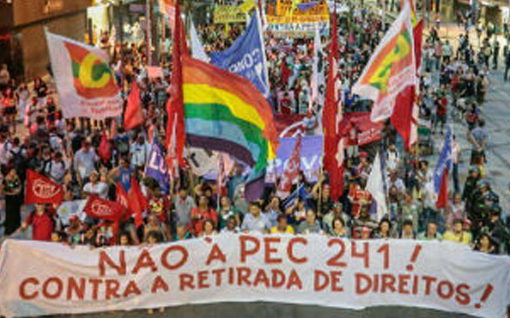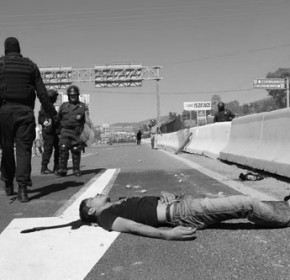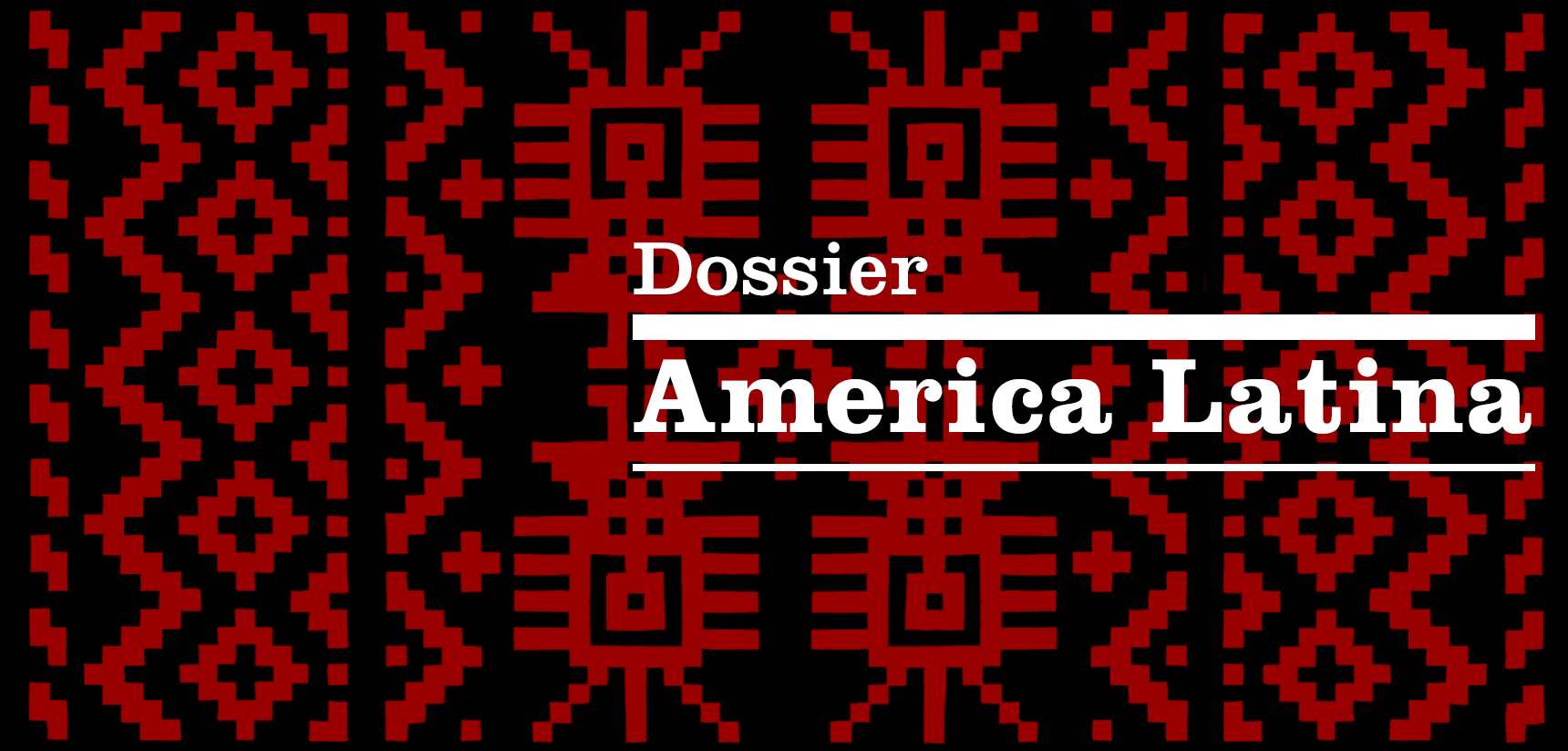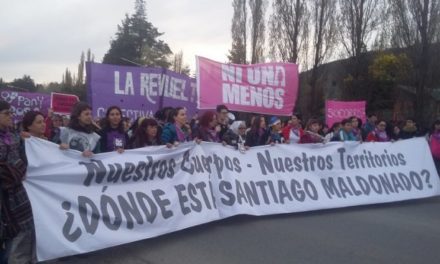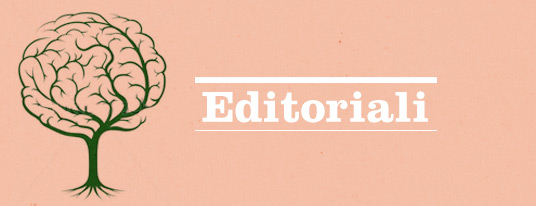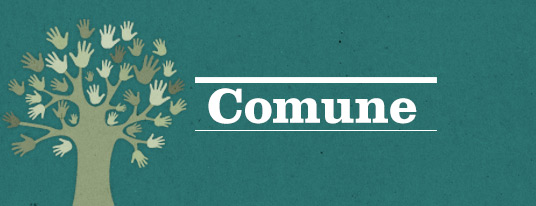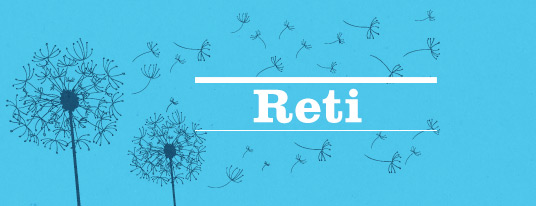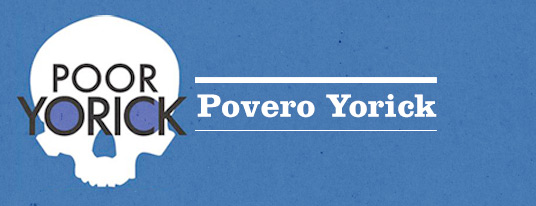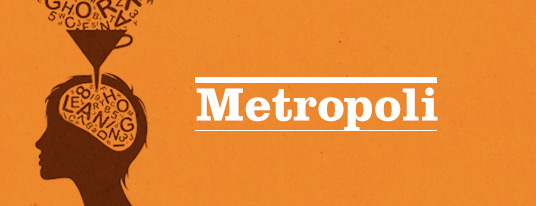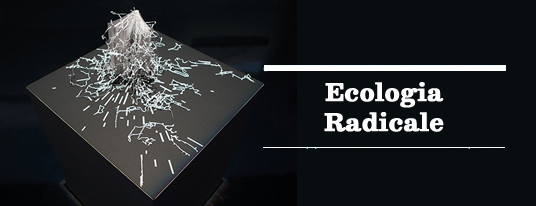di FELIPE MAGALHÃES.*
On December 6th, 2016, the Brazilian Federal Police started acting publicly on an operation they decided to call “Esperança Equilibrista” (Equilibrist Hope), coercively conducting from their homes the rector, Jaime Ramirez, and vice-rector, Sandra Almeida, of Federal University of Minas Gerais (UFMG). The name is a clear reference to Aldir Blanc and João Bosco’s 1979 song recorded by Elis Regina about the military regime, exiled activists, and the “equilibrist hope” – that in spite of the dangers of each step dancing on a tightrope with an umbrella, “knew that the show of every artist had to continue”. The operation, which arrested and conducted Ramirez and Almeida (in a performance with intense corporate media coverage) without their previous denial to attend hearings, investigates the university on deviation of public resources from its originally intended aim, the construction of the Amnesty Memorial, whose works are incomplete due to technical problems with the project, towards other unrelated ends (i.e., general research expenses, publications, grants for research assistants etc.). The accounting character of the (still inconclusive) accusations hide behind a large mediatized operation of police officers forcing professors out of their homes in an environment with much thirst for such spectacles of justice promotion. In March 2016, former president Lula went through exactly the same spectacularized public humiliation. Knowing that public opinion will tend to judge suspects without much scrutiny, this has become a central strategy in the unfolding of the 2016 coup since its beginnings: corruption charges (obviously pertinent and correct in their large majority) are instrumentalized for the sake of a platform (of hardcore shock neoliberal fix) that had been defeated (by the soft PT version of socially progressive neoliberalism) in the ballots in the 2014 elections, and is now being delivered by the putchists1. This is also an environment in which neoliberalism – through the large corporate media and, these days, with the support of a wide heterogeneous network of falsely independent internet political trend setters – takes a ride in the critique of the corrupt state always attempting to turn it into new versions of its old critique of the nanny state.
A few months before the police assault, the same group involved in the Amnesty Memorial had organized an exhibition, “Desconstrução do esquecimento: golpe, anistia e justiça de transição” (Deconstruction of forgetting: coup, amnesty and transition justice) on the memory of the dictatorship in the university’s cultural center in downtown Belo Horizonte, with many implicit parallels to the current conjuncture. Some of the professors and researchers involved in the police hearings not only had direct participation in the exhibition, but also were central agents in truth comissions and wider (academic and official) investigations on the dictatorship’s criminal record.
The rectors’ arrest in Belo Horizonte happened two months after the suicide of (Federal University of Santa Catarina) UFSC’s president, Luiz Carlos Chancellier de Olivo, who had been publicly humiliated in the same way, and forbidden by judges to enter the university while the investigations of alleged deviation of resources proceeded. Olivo, who had been arrested by the military government and said he felt in exile with the interdiction, dropped himself from the top of a shopping mall in Florianópolis with a note in his pocket affirming: “my death has been decreed on the day of my removal from the university”.
The police action at the UFMG also comes right after the World Bank published a study, commissioned by the Temer regime, recommending a radical shift in the country’s public, tuition free, higher education system. The assessment is a refurbishment of an argument that circulated widely in the 1990s neoliberalization drives, that in a system in which public schools are precarious, the state-funded free university transfers income from bottom to top, for the privileged elites are the ones who can afford high quality private basic education that allows students to to access the highly competitive public system. However, the document fails to portray the impressive democratization process that affirmative action policies (related to race, income, and public school attendance) have brought to public university campi in the country since the mid-2000s. This has had a clear impact on the composition of classrooms, and at the time arrives at the graduate level, with important potential shifts (already starting to appear) in the content of much knowledge production, especially in the social sciences and humanities.
Some in social movement circles interpret that this shift in the social composition of students is an important part of the attack on the public university system, apart from the financialization drives behind most of the reforms brought about by the coup, which expands terrains for long-term debt increases in many different fronts, college financing being one of them. The attack is part of a wider roll-out neoliberal fix that also includes a violent reform of the labor code taking away workers’ rights, a freezing of the federal budget for social services for twenty years, heavy cuts in public spending on science and technology, a technically oriented reform of public high school curricula aimed at job market needs (ending the requirements for sociology and philosophy that had been introduced as mandatory subjects in 2008), among many other radical policy shifts that would very hardly be sanctioned through the ballots.
The announcement of the secondary school system reform brought immediate action from student organizations (that gained a lot of strength in this decade’s radical politics scenario whose culmination point was in the protests of June 2013), who managed to occupy and squat hundreds of public schools across the country in the end of 2016. After the government announced the freezing of the budget dedicated for social services, changing the constitution’s requirement of minimum percentages of total expenses for public health and education, university students followed the lead from their high school peers and occupied hundreds of buildings across the country, in many cases forcing professors to join them in the strike. Some of these occupations lasted for 90 days, and clashed directly with professors and administrative staff that would not accept the student led strike, or what the recrudescent conservative discourse behind the coup itself has been calling the “coup narrative”. Protest trips to Brasília, the ultimate protest-proof national capital, have been organized in and through the occupations, some of which were violently and easily repressed by heavily armed police forces, also directed towards the indigenous populations protesting against the widespread current attack they have been suffering almost on the same days. Hence a clear message sent to the government’s network of antidemocratic forces: students, high school teachers and university professors are not afraid of being pivots of resistance and raising voices against the illegitimacy and the authoritarian character of what’s happening in the country these days.
This has been another pattern that involves the lineages of events that culminate in the coup: strong, planned and concerted reactions to the unquestionable strengthening of the left (of PT) since the June 2013 events. During those street protests, that involved a new wave of social movements independent of the network that connected movements to the PT constituted in the previous large wave of political action of the 1970s and 80s, the reaction mobilized by the country’s large unregulated corporate media happened in the middle of the events themselves. The message seemed clear: it is unacceptable for the important sections of the country’s elite, still reproduced largely through patrimonialist/clientelistic arrangements, a scenario of a center-left government without the cooptation mechanisms that characterized Lula’s relation to social movements from 2003 to 2010. Moreover, a center-left government with potential openings for vectors coming from these strong and active social movements seeking autonomy and attacking the government from the left, combined with the end of the commodity boom in 2014, – partially responsible for the pact between important elite fractions and the PT government – provided the combination required for a wider array of hegemonic forces to mobilize whatever means they had to turn the tide in their direction.
The contemporary university, marked by a pluralism of emancipatory agendas and a renewed environment of horizontality constructions, appears in the middle of this larger coup processes as the perfect grounds for resistance. This is a conjuncture in which even the hard sciences often find themselves in subversive positions and under direct attack, with agroindustrial legislators attempting to censor research on the effects of pesticides at Fiocruz, or the case of Elisaldo Carlini, a UNIFESP based, 87 year old medical doctor, who has been researching drugs and medical marijuana for several decades, recently accused of conniving at criminal acts2. Moreover, the strong and violent masculinist, racist and elitist character of the coup and the current regime comes in response to the advance in intersectional practices between several different fronts of emancipation and resistance that find important points of encounter in the openings of the university today. Of course, the current conservative tsunami would forge ways to attack these political spaces on their institutional spines. However, resistance manages not only to keep itself alive and vibrant, but also to maintain the university free (of tuition even), and still directed towards the objectives of larger openness for the poor, black majorities to construct their own spaces of knowledge and culture (a process that has only begun). Although financial resources for science, technology and research have already been violently cut, affecting mostly the poorer graduate students and research assistants, if by the end of the current authoritarian wave the university manages to stand in its current configurations3, these plural forces of resistance will have won yet another battle.
* Geography, Federal University of Minas Gerais (UFMG), felmagalhaes@ufmg.br
It is beyond my scope in this piece to bring a formal elaboration for labelling the institutional rupture that occurred in 2016 as a coup. I simply point to the absence of the “responsibility crime”, required for the opening of impeachment procedures, in the “fiscal pedalling” for which Dilma Rousseff was formally convicted (a public accounting maneuver in budget shutdown situations in which the government temporarily borrows idle cash from public companies). The fact that her judgment decided not to suspend her political rights (formally an automatic outcome from impeachment trials), keeping her able to run in the next elections, proves the contradictory character of the decision, and proves the wide acceptance in the political class that the administrative infringement committed was simply the only thing they could find for congress to formally open the impeachment process. ↩
“Apologia ao crime”, a public statement in favor of criminal activity, is a legal instrument that has been frequently used in the last few years for the arrest of rappers and other performing artists on the grounds of promoting marijuana use. ↩
With parallels to the 1990s long and frequent strikes by professors and administrative staff, that managed to resist the attempts by the government of Fernando Henrique Cardoso at suffocating the system and its many pressures for privatization. ↩

